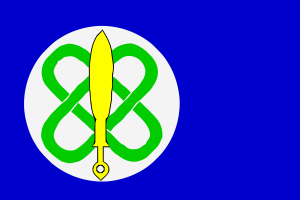Difference between revisions of "Language/Yoruba/Vocabulary/Colors"
m (Quick edit) |
m (Quick edit) |
||
| Line 108: | Line 108: | ||
{{Yoruba-Page-Bottom}} | {{Yoruba-Page-Bottom}} | ||
{{Yoruba-0-to-A1-Course-TOC}} | |||
[[Category:Course]] | |||
[[Category:Yoruba-Course]] | |||
[[Category:0-to-A1-Course]] | |||
[[Category:Yoruba-0-to-A1-Course]] | |||
Revision as of 00:20, 18 March 2023
Hi Yoruba learners! 😊
In this lesson, you will learn the words for different colors in Yoruba. Colors are an essential part of our lives and can be used to describe things around us, from the natural environment to our clothes and accessories. Yoruba colors are also closely tied to Yoruba culture and traditions, so understanding them is an important part of learning the language.
Basic Colors
Let's start with some of the most basic colors in Yoruba:
| Yoruba | Pronunciation | English |
|---|---|---|
| Pupa | poo-pah | Red |
| Funfun | foon-foon | White |
| Búlúù | boo-loo | Blue |
| Dúdú | doo-doo | Black |
| Omi èjò | oh-mee eh-jaw | Green |
| Banafà | bah-nah-fah | Brown |
| Odo | oh-do | Gray |
| Atupa | ah-too-pah | Yellow |
| Opipi | oh-pee-pee | Orange |
| Pẹlẹwú | peh-leh-woo | Pink |
Some of these colors might sound familiar, while others might be new to you. For example, Pupa (Red) is derived from the Yoruba word for pepper, which is also red. Similarly, Omi èjò (Green) is derived from the Yoruba word for leaves, which are usually green.
Shades and Tones
Just like in English, Yoruba colors can have different shades and tones. Here are some examples:
| Yoruba | Pronunciation | English |
|---|---|---|
| Awọ̀n ńlá | ah-wohn n-lah | Dark shades |
| Awọn tuntun | ah-wohn toon-toon | Light shades |
| Lọwọ wọ wọ | loh-woh woh woh | Multi-colored |
| Awọn tó n dun | ah-wohn toh n doon | Attractive colors |
| Awọn púpọ́ inagin | ah-wohn poo-poh ee-nah-ghin | Dull colors |
In Yoruba culture, colors are often used to convey meaning and symbolism. For example, white (Funfun) is associated with purity and spirituality, which is why white clothing is often worn during religious and cultural ceremonies. Similarly, red (Pupa) is associated with passion, love, and energy, which is why it is often used in Yoruba art and fashion.
Dialogue
To help you learn these colors in context, here is a dialogue between two friends:
- Friend 1: Báwo ni àwọn ọ̀pọ̀ kan tó fẹ́ lóòdọ̀ sí yìí?
(Translation: What do you think of the colors of this dress?)
- Friend 2: Ó dára jùlọ, nítorí funfun àti pupa ti ń sọ̀rọ̀ sí.
(Translation: It looks beautiful, because of the white and red colors on it.)
- Friend 1: Ẹṣin tó fẹ́ràn, niwọlé àti awọn ọgba tó wà níbẹ̀.
(Translation: It is a lovely horse, especially with the black and brown stripes on its body.)
Conclusion
Colors are an important part of any language, and learning them in Yoruba can help you better understand the culture and traditions of this rich West African community. To improve your Yoruba vocabulary even further, you can also use the Polyglot Club website. Find native speakers and ask them any questions!
Remember to practice and incorporate these words into your daily life, and have fun exploring the colorful world of Yoruba!
➡ If you have any questions, please ask them in the comments section below.
➡ Feel free to edit this wiki page if you think it can be improved. 😎
Sources
- Yoruba Culture: A Philosophical Account by Kola Abimbola (1995) - Basic Yoruba Language by Fagbenro and Adegbija (1991) - Yoruba Dictionary by R.W. Koelle (1854)
Related Lessons
- How to say Good Bye?
- Drinks
- Fruits
- Education
- Clothes
- Express Surprise
- Count to 10
- Health
- Days of the Week
Sources
- Color in Yoruba | Color Words | Color Vocabulary - Learn Entry
- Words you need to know to talk about Colors in Yoruba.
